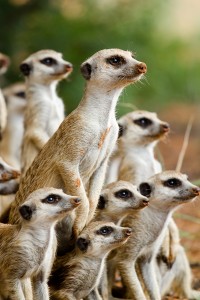 Many species live in socially and spatially structured populations, and the behavioural, evolutionary, and demographic aspects of sociality have been the focus of much theoretical and empirical research. One major shortcoming of the empirical work, due mainly to practical considerations, has been its focus on already-established social groups (either in captivity or in the wild) and its omission of complexity in between-group processes, such as dispersal and new group formation. Natal dispersal of individuals, immigration into existing groups, and new group formation are latent but crucial aspects of dynamics in socially and spatially-structured populations. The high fitness costs associated with each stage of dispersal (emigration, transience, and settlement) are likely to induce strong selective pressures on within-group social strategies that directly or indirectly relate to dispersal: e.g., inbreeding avoidance, reproductive suppression, mate finding strategies, helping behaviours, etc. The fitness consequence of these social strategies cannot be accurately assessed, and investigations of behavioural, evolutionary, and demographic processes are therefore incomplete, without a socially and spatially explicit approach that accounts for between-group processes.
Many species live in socially and spatially structured populations, and the behavioural, evolutionary, and demographic aspects of sociality have been the focus of much theoretical and empirical research. One major shortcoming of the empirical work, due mainly to practical considerations, has been its focus on already-established social groups (either in captivity or in the wild) and its omission of complexity in between-group processes, such as dispersal and new group formation. Natal dispersal of individuals, immigration into existing groups, and new group formation are latent but crucial aspects of dynamics in socially and spatially-structured populations. The high fitness costs associated with each stage of dispersal (emigration, transience, and settlement) are likely to induce strong selective pressures on within-group social strategies that directly or indirectly relate to dispersal: e.g., inbreeding avoidance, reproductive suppression, mate finding strategies, helping behaviours, etc. The fitness consequence of these social strategies cannot be accurately assessed, and investigations of behavioural, evolutionary, and demographic processes are therefore incomplete, without a socially and spatially explicit approach that accounts for between-group processes.
In this research, we bring together theoretical models, novel telemetry data on dispersal, and long-term individual-based data on within-group processes to provide a spatially explicit investigation of the life history strategies in a cooperatively breeding mongoose, the Kalahari meerkat. Using this new perspective, we will be able to re-evaluate the fitness consequences of alternative social and behavioural strategies while accounting for dispersal in particular and between-group processes in general at an unprecedented detail level.
In collaboration with:
Marta Manser (University of Zurich)
Tim Clutton-Brock (University of Cambridge)
Andrew Bateman (University of Alberta)
